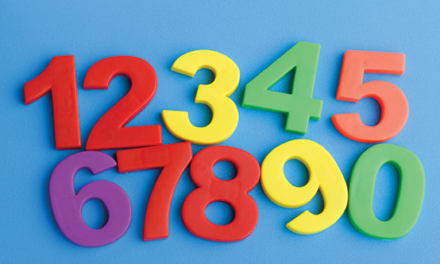Four African-American educators speak out about the underlying dynamic at play in many American classrooms.
An undeniable issue of classroom management is the mix of white, middle-class teachers, and administrators serving schools and classrooms that have significant populations of male students of color. This phenomenon has been widely explored, but rarely do we stop to address the simple dynamic in the room that is endemic, pervasive, and seemingly immutable: race. It robs the room of trust and shrouds it in suspicion. Mistrust was one of the accelerants in the unrest in Ferguson, Mo., this summer, just as it is in so many unspoken ways in many of our institutions, including schools. 
Being a well-educated white woman or white man with good intentions should not by itself wreck the relationship between black students and white teachers. But we all know that there are many, both black and white, who believe the racial difference alone is enough to disrupt the relationships at school. This roundtable discussion with African-American (mostly male) educators attempts a candid conversation — deliberately one-sided — about that dynamic.
Kappan: We all know the numbers indicating that black males tend to be punished more severely for school and classroom infractions than other school children, so let’s not dwell on them. Kappan has invited you to this roundtable discussion because you, unlike so many others, not only have “made it,” but you have steadily worked and studied ways to help young black males become more successful in the schoolhouse and in life. So, first, let’s test the thesis: Is there a particular systemic problem with black males in schools, and what precisely is it?
Richard J. Reddick: The very framing of that question is problematic. I would reframe to say there’s a problem in schools, and it affects black males. That’s evident in, as you said, the numbers. We know about special education and discipline, we know about the White House report that black students are three times more likely to be expelled or suspended. If you ask me, this is all about zero-tolerance policies, our concerns about school violence, but that flies in the face of the data because the data actually say we should be more concerned with the idea of societally confirmed entitlement for white males. That is more of a concern when it comes to school violence than anything black males are doing.
Fluke Fluker: The problem played out in schools for black males is just part of a larger societal issue that plays out from birth. Think of the prison industrial system that capitalizes on it as well as a lot of other agencies.
Keffrelyn Brown: One of the challenges with schools is that they have been held up as the one space where we’re able to receive an equitable educational experience that will allow us to move ahead in society. But, given that schools are part of that society, they embody the same strictures that negatively affect black males or black children in the broader society. And that’s what makes it a much more insidious problem that needs to be addressed head on.
Sherrod Willaford: I agree with everything that’s been said. Black males are disenfranchised from the schoolhouse, and we have enough current and historical data to show that this is happening across America and that the successful black male in the schoolhouse is the outlier. And folks like ourselves, people who are successful, we are the outliers and not the norm.
Being black, teaching black
Kappan: All of you at some point were classroom teachers with black males in your classes. What was your approach, and how should that inform what ought to be going on in American classrooms?
Willaford: I’m in a different role now, but I still consider myself a teacher. Earlier in my career, I was very motivated just to make a difference in the lives of the students I taught. I had a very good foundation — very good teachers who motivated me in the absence of my father. Even though my mother was very much there, encouraging me to get an education, she had to work, so my teachers were very much a part of my life. I took that into the classroom as a professional. Building a relationship with my students, inspiring them, motivating them, and I taught in an environment that was 99% African-American so I saw a lot of young men who looked like me. So it was easy for me to go in and be successful working with young men and women, the boys who looked like me. I could relate to them. I could speak their lingo. I was able to impact their lives. As I moved on through the system, becoming an administrator, that same passion to make a difference is a part of me. I still find myself in schools a lot, and I find myself always mentoring, trying to motivate them to do the right thing, whether they’re doing the right thing or the wrong thing. I think that’s very important. We need more black men in the system.
Fluker: I’m currently in the classroom. Three basic things help set the tone of a great learning environment that engages our black males. First, when I enter a room as a teacher, I acknowledge that there are not 45 students and one teacher but 46 teachers in the room. I have not been a teenager in the 21st century. My enemies did not carry AK-47s. Crack was not around. They are living lives that I have not experienced so I try to create a reciprocal learning environment where I’m involved in learning as well as they are. Second, my 30 years of teaching have taught me that kids don’t care what you know until they know that you care. Bottom line. And third, one of the things that I do, and I do it very formally, is that I ask the students in my class for their permission, which rocks their world because they’ve never had an adult ask them for permission for anything. I ask their permission to tell them the truth, and, in doing so, I try to forewarn them that the truth is not always nice, it’s not always warm and cuddly, it does not always show up with warm milk and cookies. But the truth sometimes has a way of getting out. So working with those three basic things, you create a learning environment conducive for black males that challenges them. Our kids are competitive by nature. Our kids are warriors by nature. They’re just fighting the wrong war. If we can get them to fight the correct war, wow! The results will speak for themselves.
I never once met an African-American male child who didn’t care about learning. Ever. They may not have been interested in learning what I was trying to teach at the moment, but they were interested in learning.
Brown: I taught at the elementary level and at middle school in an alternative school setting. Two very different spaces, two very different populations of children. But I had black students in both, and I never once met an African-American male child who didn’t care about learning. Ever. They may not have been interested in learning what I was trying to teach at the moment, but they were interested in learning. Our job is to continuously maintain high expectations for them, to believe that they can learn, and to share with them when we see them making those successes.
Reddick: I taught elementary school and middle school as well, and I know for a fact that the most important thing for my kids is that they were so used to having people let them down, adults let them down, that they tested me — many times. That was part of the discipline issue I dealt with. It was, “well, how real are you? How down are you? Are you going to be here if we give you a hard time? Are you going to walk away and leave?” I definitely thought about doing that. When it became apparent that wasn’t the case, my teaching took on a much more positive dynamic because then it was like, “OK, Mr. Reddick cares about us; we trust him.”
My biography in part is that I went to Department of Defense schools overseas for about 10 years. Those schools have a high transition rate, and they have a high low-income sort of population, but discipline is at the core of what’s happening there — and it’s self-discipline because every kid knows that, if you mess up and have problems, then your parents get involved, and that’s a mess. You don’t want that. I had teachers who said, “you can achieve at this level, and you will achieve at this level and that’s it. We’re not going to talk about the fact that you’re black or the fact that you come from this kind of background. That’s irrelevant.” And I brought that to my teaching as well. It didn’t matter to me what background a kid had. The idea of respect, trust, and high standards is really at the core of efficient teaching — and the idea of being constantly open to learning how to do the job better is critical in this role.
Fluker: Our kids are not monolithic and don’t fit into one little box. But our kids all want to learn. The issue for some of our kids in urban centers is that they are in survival mode. Pookey got shot last week; the week before that Tyrone got shot; the week before that Trevor got incarcerated for shooting somebody. So many of them have a very short-term view of things. What’s important to them is going to be different than those who have a longer term view of their lives. If you’re only thinking about living today, tomorrow, or next week, you will place a different value on education than if you are thinking of five, 10, or 20 years from now.
Perceptions of black boys
Kappan: Let’s address our practitioner audience a bit more. Here’s a scenario: A young black male walks into a classroom, no sagging pants, books in hand, but there is a white teacher. Is that a problem? I ask this because three steps ahead of him in this hypothetical was a young, teenaged, tattooed white student with black painted fingernails and a T-shirt emblazoned with the logo of a hard-rock band.
Brown: Well you’re getting at perceptions. The question is which one has been normalized or, at least, more normalized to the experience of that teacher as not being a threat. And which one has been more normalized as potentially being a threat. Which one of those children has been positioned more as a learner, maybe a resistant learner — and which one hasn’t. How a teacher thinks about a student and the assumptions she makes about who that student is and what that student is capable of has a huge impact on teaching and learning. We need to recognize that when we’re in schools, that all black males are not dealing with the same kinds of issues — thus they need to be addressed in a very contextual way. Unfortunately, the discourse, the policy discourse as well, doesn’t really take that into account.
Reddick: I love the scenario because I found it very biographical, for me at least, because I was actually the black kid who was trying to find my identity. We have such strait-jacketing descriptions of what it means to be a black male. This scenario brought to mind a situation that happened here in Texas a little while ago where a white male described much like you have the description here got up in the classroom and called out a teacher, saying she wasn’t teaching the right way, that she wasn’t challenging her students, and so on. There was this great discussion over whether he did that in an inappropriate way. I thought it was good to have a discussion about a teacher’s effectiveness. But if a black male had gotten up in the classroom and done that, would we be talking about the black male and why he was so angry?
If you’re only thinking about living today, tomorrow, or next week, you will place a different value on education than if you are thinking of five, 10, or 20 years from now.
Kappan: Another thing we should address is the perception or maybe misperception of the mystique of “toughness.” Black and Latino boys — especially those from low-income neighborhoods, grow up steeped in it. You can be anything — except weak. They learn the look and the walk. So, is this reality, and, if so, how can we keep that from casting a chilling pall in the classroom?
Fluker: Kids develop coping mechanisms, survival skills. Some of them keep you from having a “victim look.” You learn the pulse or vibe of the streets, you learn that not everyone can be trusted, you learn to keep your head on a swivel and like any successful person you learn to play to your strengths and disguise your weaknesses. But please, don’t be fooled. At the end of the day, after peeling back the layers of facade, you often have a confused, sometimes scared kid trying to make sense of it all. Effective educators recognize that and in a respectful way address it and provide healthy navigation tools.
Reddick: The subtext of this question is about how toughness is manifested in boys of color. Doubtless, to be armored for ascent in 21st-century America, our boys need to be tough — but toughness isn’t just one troped version of masculinity. Toughness in my mind means self-discipline, thoughtfulness, and having a plan. Note that this has nothing to do with physical strength. We can use examples of toughness with our boys. We need to share more exemplars like President Obama, César Chávez, James Baldwin, Jose Antonio Vargas, and Neil deGrasse Tyson. These men are “tough” but not in the ways that media typically shows men of color to be tough.
On the other hand, what is weakness? To me, that’s lacking self-discipline, not upholding the values of your family and community. It doesn’t matter how much you can bench press if you are a negative influence in the community. By providing examples of tough men — famous and those in their social circle, like pastors, fathers, uncles, brothers, and teachers who are doing good work for the good of the collective — we can broaden the definition of what it means to be tough. Ultimately toughness has less to do with one’s fists and more to do with one’s mind.
Kappan: We may have seen a version of such misperceptions in the troubles in Ferguson, Mo. What is your take on that?
Willaford: It’s difficult to comment on Ferguson without knowing all the facts. Nevertheless, in regards to dealing with black males, it is imperative that we know our students before we are able to teach them. We must go into their neighborhoods and intentionally learn about their opportunities and challenges. Curriculum must be developed, planned, and delivered to link to prior experiences while connecting our students to and building for tomorrow — a future that is yet unborn.
Beyond the classroom
Kappan: What about outside the classroom, yet still within the school? What do school administrators need to know or do to make a school more appealing and comfortable to young black males?
Fluker: One of the things that we tried to do was a field trip where our teachers, our faculty, and staff would get on the bus at 6 a.m., take the hour ride that our kids from South Central L.A. had to take to go to some of the schools in the Valley and go to their neighborhoods, and see and understand and begin to comprehend the environment these kids come from. That was crucially important.
Willaford: Mindset plays a vital part in terms of teachers and administrators. Administrators have to know who’s coming into the schools. Children have to feel safe. We often hear about safety being a priority. I take that to mean in terms of violence or safety from violence but also as a place to learn, a place to take risks. It’s a risk to learn. It’s a risk to go to school — and you want to set up an environment where students feel safe so that they can learn.
Reddick: The question harkens back to my experience when I was teaching, and I was the only black male teaching at my elementary school. The only other African-Americans were custodial staff, administrators, and coaches, so it took me awhile to find my footing. For a while, I dressed like a coach — wearing sweats to school. Then I said, “Wait, this is not what I do. I’m a teacher.” Not every black man is going to be a powerful, booming coach type. That’s not my personality. We need to see black men as pedagogical role models, as role models for the kids, and also for teachers because it’s such an under-represented role, especially in elementary education.
Confidence, intelligence . . . and fear
Kappan: Aside from being an educator, you all also are parents. What does that make you think about how black boys are treated in school and their responses to that treatment?
Brown: As a mother of a black male child and as an educator, I can say that I think about the importance of black men just having confidence, believing in themselves, recognizing that they are smart, intelligent, that they can make a difference in the world, and that they have something to contribute.
Reddick: I always think about W.E.B. Dubois’ words 110 years ago when he said, “How does it feel to be a problem?” I remember distinctly when my dad sat with me when I was a kindergartner, and we talked about the fact that a kid said n[…] to me. I have a 6-year-old son now, and I’m dreading that conversation. But that is part of what we have to deal with. I wish I could be more positive and more uplifting about this, but I really do have a lot of concern about my own son and the black males out there. Are there enough of us thinking about their value and their worth versus those who think of them as threats?
Fluker: It’s interesting because probably the greatest joy for a parent, and particularly for a black male, is when that son is born. But on that same day, almost simultaneously, it’s the greatest sense of fear.

CITATION: Patterson, G.A. (2014). Boys from the ‘hood — often misunderstood. Phi Delta Kappan, 96 (2), 31-36.
ABOUT THE AUTHOR

Gregory A. Patterson
GREGORY A. PATTERSON is the former managing editor/content for Kappan magazine.












